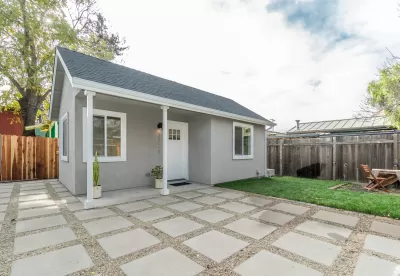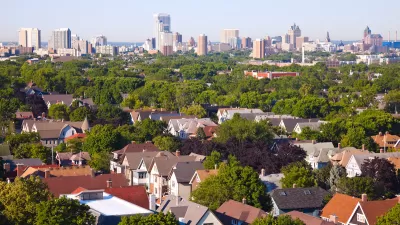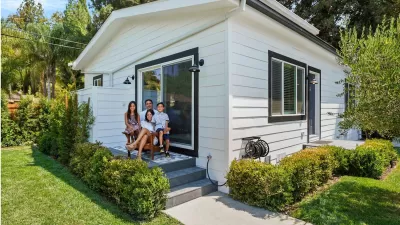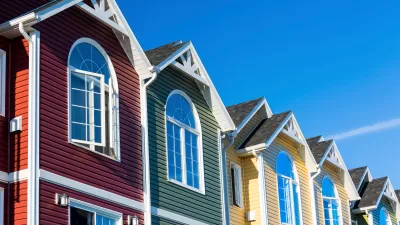Homeowners in the state are eagerly taking advantage of new laws allowing them to build additional housing units, making a small but significant impact on the housing supply.

The liberalization of laws surrounding the construction of accessory dwelling units (ADUs), also known as granny flats, is starting to make a significant dent in California’s housing crisis. While far from a panacea, the flurry of permits issued for ADUs signal that homeowners across the state are eager to take advantage of the opportunity to build an extra housing unit on their property.
As Erica Werner explains in The Washington Post, “More than 23,000 ADU permits were issued in California last year, compared with fewer than 5,000 in 2017 — which was around when ADU permitting began to take off thanks to legislative and regulatory changes in the state.” Los Angeles issued 7,160 of those permits, while only issuing 1,387 permits for single-family homes in the same time period.
Despite the high cost of ADU construction—the average unit runs roughly $300,000—“a study from the NYU Furman Center found that ADUs are being built not in the wealthiest neighborhoods, but more often in low- to middle-income areas, and often in places with relatively good access to jobs.” According to study author Christopher Elmendorf, “‘That’s consistent with the theory that this is a viable form of development in places that you may not’ otherwise be able to easily build.” David Garcia, policy director for the Terner Center for Housing Innovation at the University of California at Berkeley, says the speed at which Californians are applying for ADU permits signals “a pent-up demand from homeowners to want to do more with their land.”
FULL STORY: ‘Granny flats’ play surprising role in easing California’s housing woes

Alabama: Trump Terminates Settlements for Black Communities Harmed By Raw Sewage
Trump deemed the landmark civil rights agreement “illegal DEI and environmental justice policy.”

Planetizen Federal Action Tracker
A weekly monitor of how Trump’s orders and actions are impacting planners and planning in America.

The 120 Year Old Tiny Home Villages That Sheltered San Francisco’s Earthquake Refugees
More than a century ago, San Francisco mobilized to house thousands of residents displaced by the 1906 earthquake. Could their strategy offer a model for the present?

Opinion: California’s SB 79 Would Improve Housing Affordability and Transit Access
A proposed bill would legalize transit-oriented development statewide.

Record Temperatures Prompt Push for Environmental Justice Bills
Nevada legislators are proposing laws that would mandate heat mitigation measures to protect residents from the impacts of extreme heat.

Downtown Pittsburgh Set to Gain 1,300 New Housing Units
Pittsburgh’s office buildings, many of which date back to the early 20th century, are prime candidates for conversion to housing.
Urban Design for Planners 1: Software Tools
This six-course series explores essential urban design concepts using open source software and equips planners with the tools they need to participate fully in the urban design process.
Planning for Universal Design
Learn the tools for implementing Universal Design in planning regulations.
Clanton & Associates, Inc.
Jessamine County Fiscal Court
Institute for Housing and Urban Development Studies (IHS)
City of Grandview
Harvard GSD Executive Education
Toledo-Lucas County Plan Commissions
Salt Lake City
NYU Wagner Graduate School of Public Service





























